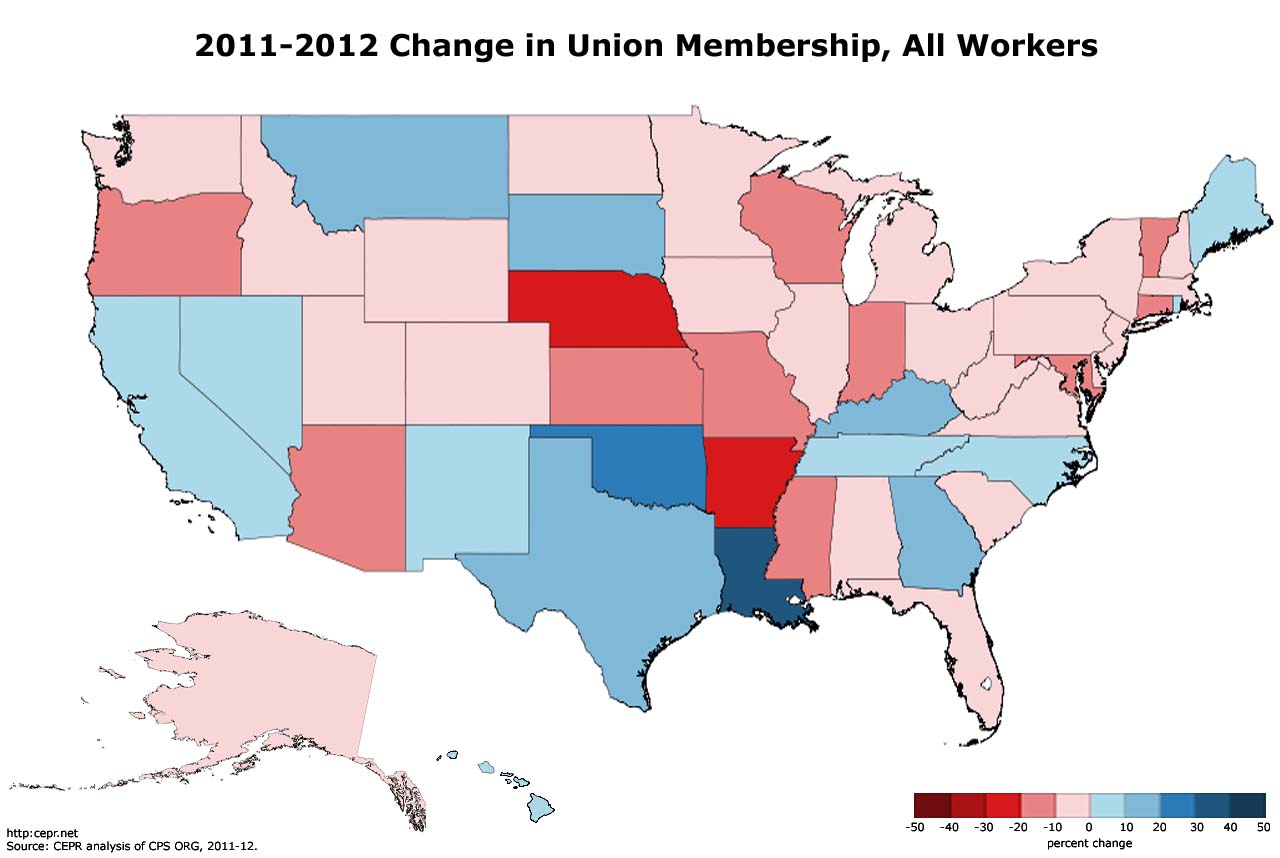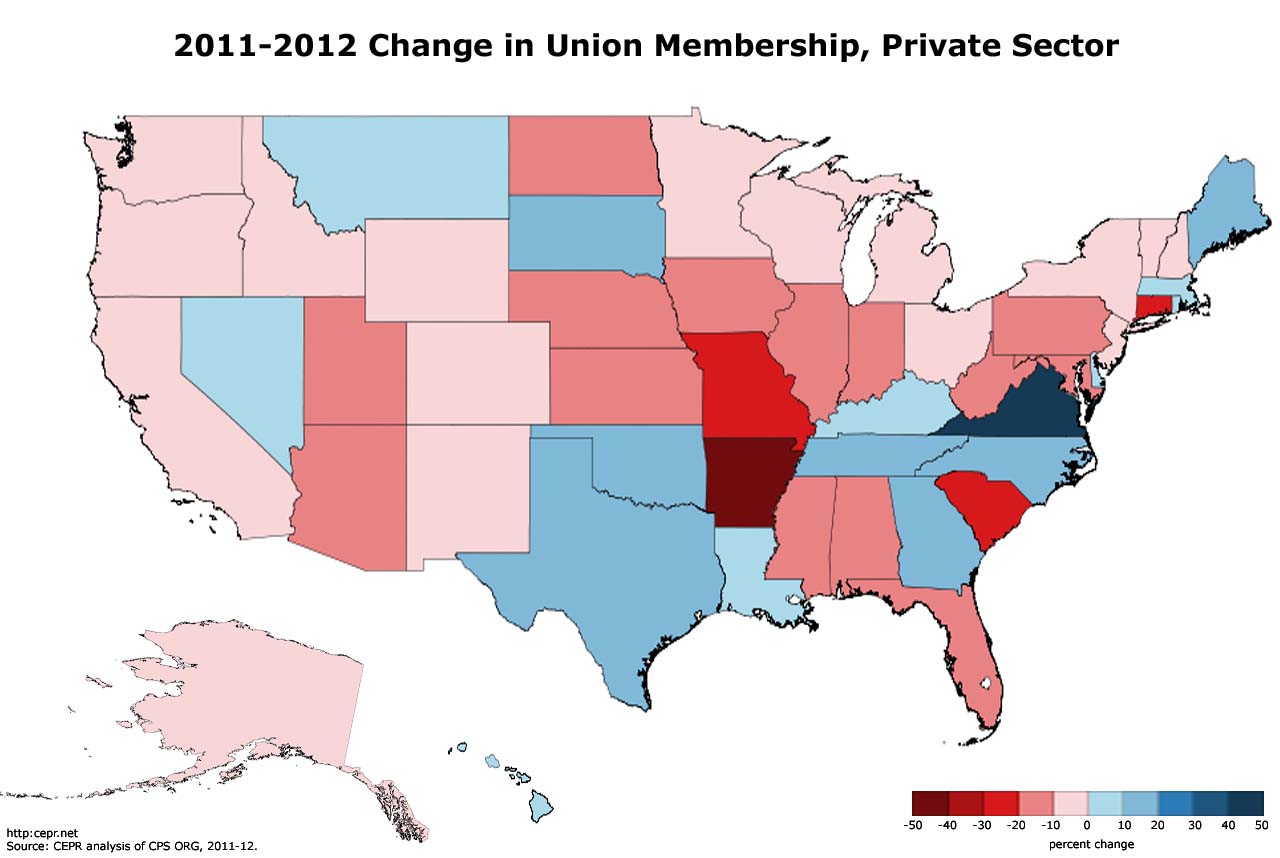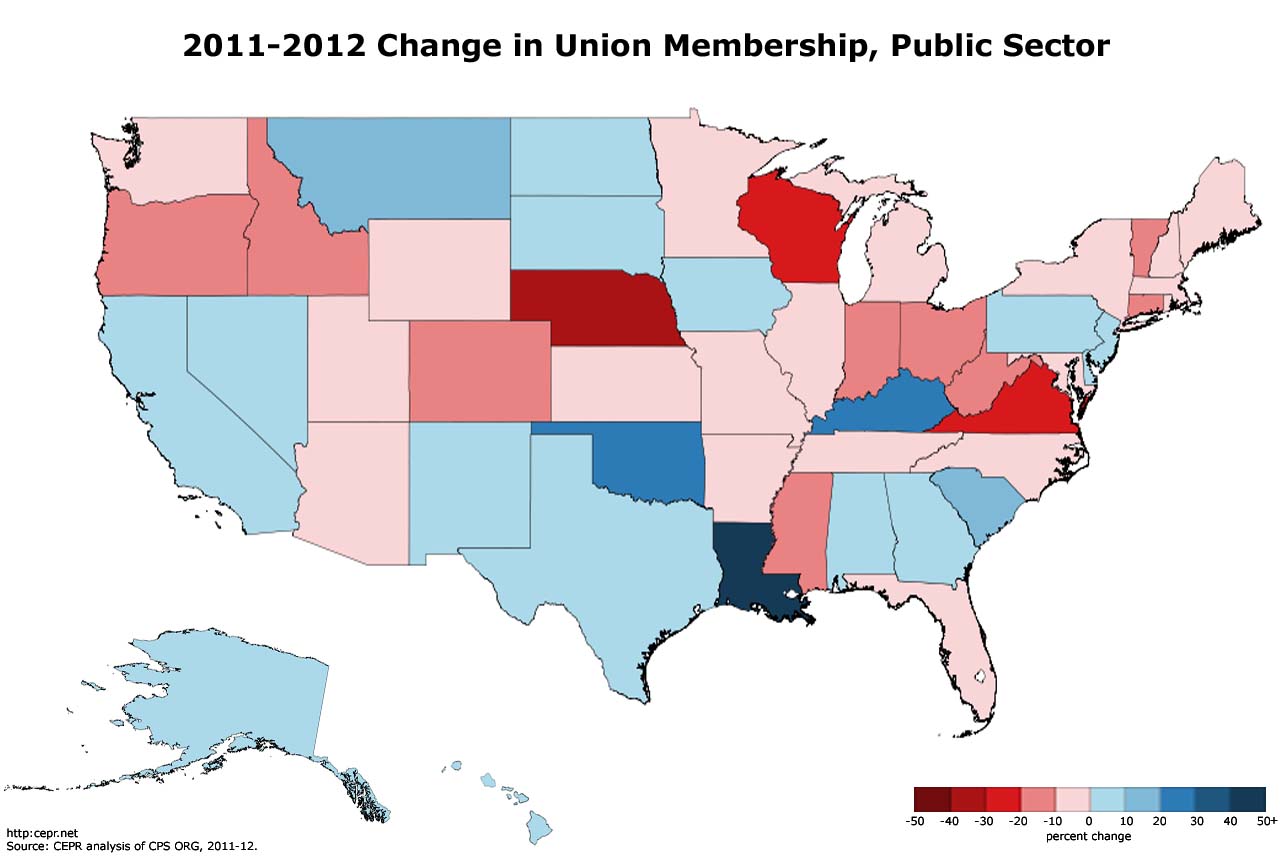January 31, 2013
Last week, the Bureau of Labor statistics released its estimates for union members in the United States in 2012. CEPR published our own analysis of the numbers, including a breakdown of state union membership in the private and public sectors.
Early analysis has emphasized specific measures such as the implementation of so-called “right-to-work” legislation in Indiana or the attacks on public-sector bargaining in Wisconsin. But, a look at changes across the states shows some geographical patterns that cross state lines.
In the three maps below, the states shaded in red hues lost union members between 2011 and 2012; those in hues of blue saw gains. The darker the hue, the greater the gain or loss as measured in percent terms. Louisiana – in dark blue – saw the greatest overall gain with a 39 percent increase in total union members. Arkansas – in bright red – had the greatest decline, losing 21 percent of its union workers.
Click Maps for Larger Version
The first map shows the percent change in all union members (that is, combining the public and private sector). The deepest reds – indicating the biggest losses – were concentrated in the center of the country, in states such as Wisconsin, Ohio, Indiana, Michigan, and Illinois. The biggest concentration of blue shades – where union membership grew most –was in the west (California, Hawaii, and Nevada) and the south (from New Mexico through Texas and Louisiana all the way to Georgia and South Carolina – though the union base in many of these states is, of course, small).
The next two maps look separately at the change in union membership in the private sector and the public sector. In general, union membership was more volatile in the private sector than the public, as seen by an overall darker map. The Midwestern and Great Lakes states, particularly those surrounding Missouri (Arkansas, Kansas, Nebraska, Iowa, Illinois, and Indiana), had among the greatest losses in private sector union members. Most of the Appalachian states (Virginia, North Carolina, Tennessee, Kentucky and Georgia), saw an increased number private sector union members, but, as mentioned, usually from a low base.
Union membership in the public sector was more stable – see, for example, most of the Northeast Corridor and the West – with a few states that experienced fairly large swings. Wisconsin (down 32 percent), Virginia (down 30 percent) and Nebraska (down 26 percent) saw the greatest decreases in public sector union members. Meanwhile, Kentucky and Oklahoma each had increases in public sector union membership of over 20 percent. Louisiana – the darkest blue in any of the three maps – had the biggest jump, almost doubling (up 93 percent) its union membership in the public sector.
Mapping the state union numbers gives a more complete picture of the state of unions. Some of these patterns just aren’t visible in the rows and columns of a table or in bars on a graph.









